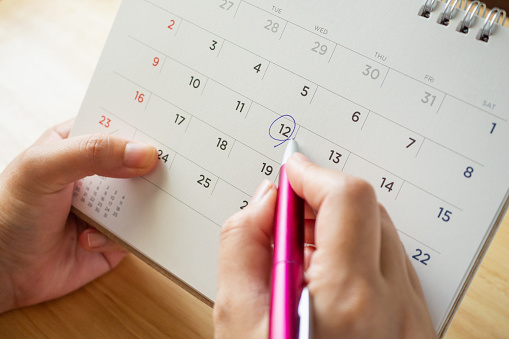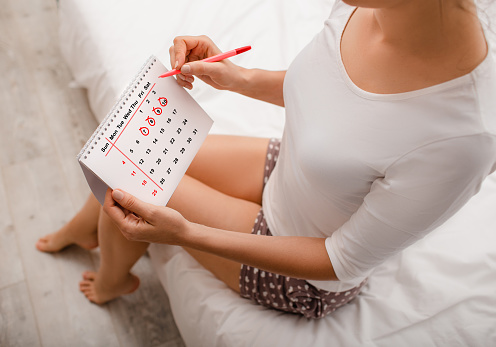
Why Calculate the Menstrual Cycle?
Also known as menstruation, menstruation occurs at puberty and marks a woman’s sexual maturity. The length of a menstrual cycle varies from person to person, hence the notion of long and short cycles. A good calculation of the number of days in a cycle helps to pinpoint the date of ovulation.
Knowing the fertile period
From the time of her first period, a young girl can become pregnant if she has unprotected sex. Determining the fertile period is a preventive measure against unwanted pregnancy. In the opposite case, monitoring the menstrual calendar is necessary for those who are ready to have a child. A complete cycle lasts from the first day of menstruation to the day on which the next period begins. In principle, this period lasts 28 days. Beyond this period, a woman is said to have a long cycle.
Before we look at how the day of ovulation is calculated, we need to distinguish between 2 types of cycle. A regular cycle is one in which the time between successive menstrual periods remains unchanged. The cycle is said to be irregular if the number of days between the start of each period varies from month to month. In this case, it is difficult, if not impossible, to say when a woman will be fertile. Ovulation occurs 14 days before the next menstrual period. This is easier for people with a regular cycle.
The organisation of daily life depends on knowing the fertile period. Whether you are a young teenager or a married woman, ovulation can mean a period of sexual abstinence or the ideal day for procreation.

Understanding your body better as a woman
Once you have calculated and obtained your ovulation date, it is essential to study how your body works. The egg has an average lifespan of 2 days, while the sperm can last up to 4 days. This means that sexual intercourse some time before ovulation can result in pregnancy. Given this reality, it’s best to leave a margin of 6 days before and after ovulation.
Pay attention to the many signs sent by your body and consult a doctor if you have any concerns. As the day of ovulation approaches, a woman’s temperature rises. Slight pain is felt in the breast, especially around the nipple. This may be accompanied by fluid being secreted by the vagina. Menstruation is supposed to stop if fertilisation occurs. A pregnancy test is therefore highly recommended to be sure.
Even if there is a way of calculating the day of ovulation, the messages conveyed by the body do not lie. Simple observation will tell you that you are about to menstruate, that the fertile period is imminent, etc. The same applies to the natural signs of the onset of pregnancy.




